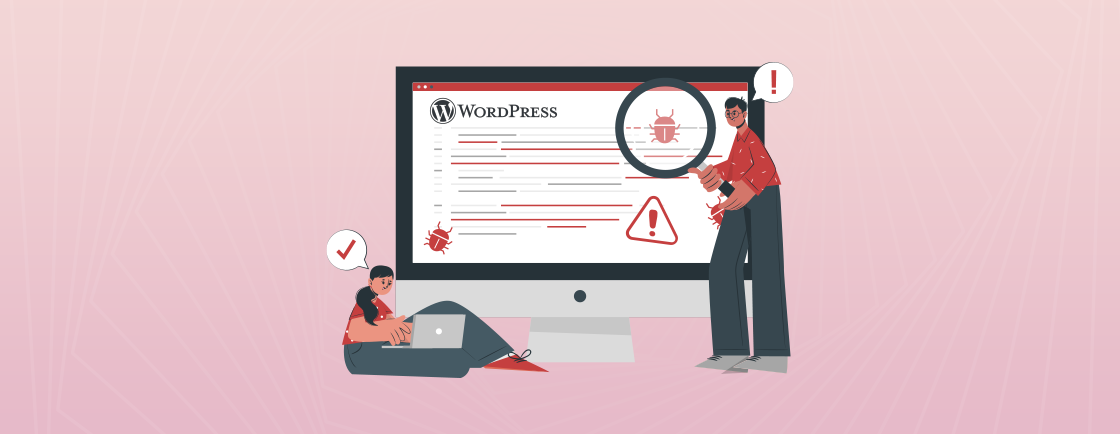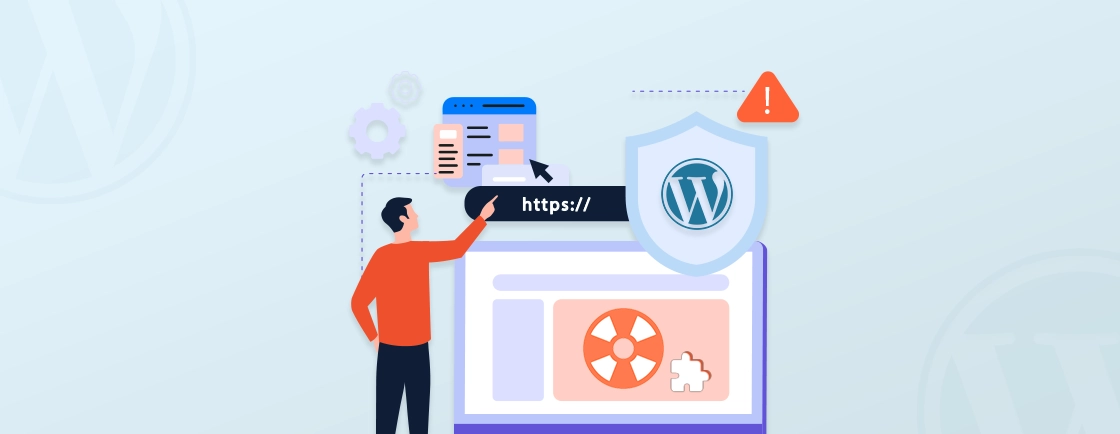Table of Contents
If you’re managing a WordPress website, one important aspect of keeping your site secure and running smoothly is understanding folder permissions. Folder permissions control who can access, modify, or execute files and folders on your server. Getting them right is a must for the security and performance of your website, helping you avoid a major reason WordPress sites get hacked.
In this blog, we’ll explain everything you need to know about WordPress folder permissions, including how they work, why they matter, and how WordPress experts troubleshoot any permission-related issues. So, let’s dive in!
What are WordPress folder permissions?
Folder permissions are settings that define who can read, write, or execute files within specific folders on your server. These permissions are important because they help keep your website safe from unauthorized access while allowing WordPress to function properly.
Types of WordPress Folder Permissions
Permissions in WordPress are generally assigned to folders and files based on three actions:
- Read (r): This permission allows users or processes to view the contents of a file or folder.
- Write (w): This permission allows users or processes to modify or delete the content of a file or folder.
- Execute (x): This permission allows users to run a file (if it’s a script, for example).
Permissions are usually represented by a set of three numbers. Each number represents different permissions for the owner, the group, and everyone else (also known as others). These permissions are set based on numeric values or letters:
- Read = 4
- Write = 2
- Execute = 1
When combined, these values form a three-digit number representing the permissions for each category (owner, group, and others). For example, the permissions 755 means:
- Owner has full access (read, write, and execute),
- Group and Others can read and execute, but not write.
By configuring permissions correctly, you make sure that WordPress has the necessary access to files while protecting your site from unauthorized modifications. This is one step toward complete WordPress brute force protection.
Why Does WordPress Folder Permissions Matter?
Correct WordPress folder permissions are essential for several reasons:
- Security: Incorrect permissions can make your website vulnerable to hacking attempts. For example, if someone can write files to your wp-config.php file (a critical WordPress file), they could potentially inject malicious code. This is key to ensuring WordPress is safe.
- Functionality: WordPress needs certain permissions to function properly. For example, the wp-content folder, which stores your themes, plugins, and uploads, must have the right permissions to allow WordPress to upload and modify files.
- Preventing Errors: Sometimes, incorrect permissions can cause WordPress to display errors, like being unable to upload images or install plugins. Correct folder permissions can help prevent these issues from happening.
Ensuring proper configuration of WordPress folder permissions improves the security and performance of your website. This leads to a smooth and error-free website operation.
Default Folder Permissions in WordPress
Permissions are generally set to default when you install WordPress. However, these default settings can sometimes change depending on your hosting provider, server configuration, or if you manually adjust the permissions.
Here are some common default permission settings for WordPress folders and files:
- Folders: 755
This means the owner can read, write, and execute; the group and others can read and execute, but not write.
- Files: 644
This means the owner can read and write the file, but the group and others can only read the file (no writing or executing).
- wp-config.php file: 440 or 400 (for added security)
This is a special WordPress file that should have strict permissions to prevent unauthorized access. 440 means only the owner and group can read it; 400 means only the owner can read it.
Why Use 755 for Folders and 644 for Files?
- 755 for folders: This allows WordPress to create new files and directories as needed but prevents unauthorized users from making changes. It ensures WordPress can write new content like plugins or theme files, but it blocks others from writing to the folder.
- 644 for files: This allows WordPress to read and edit files when needed, but ensures that unauthorized users can’t modify or execute your site files. It’s a balance between accessibility and security.
How To Check Folder Permissions in WordPress?
Checking folder permissions in WordPress is easy, and you can do it using either an FTP client (like FileZilla) or the File Manager in your hosting control panel (like cPanel). Here’s how you can check permissions in both ways:
1. Using FileZilla (FTP Client)
FileZilla is a FTP client that helps you connect to your WordPress website. Here’s how to check folder permissions with FileZilla:
- Download and Install FileZilla: First, if you don’t already have FileZilla, download and install it on your computer.
- Connect to Your Server: Open FileZilla, and enter your FTP credentials (host, username, password, and port) to connect to your server.
- Navigate to Your WordPress Directory: Once connected, you’ll see a list of files and folders on your server. Navigate to the WordPress directory (usually the public_html or the root folder where WordPress is installed).
- Right-Click on a Folder or File: Find the folder or file whose permissions you want to check. Right-click on it and select File Permissions from the menu.
- View Permissions: A window will pop up showing the permissions of that folder or file. You’ll see numbers like 755 or 644 that represent the permissions set for the owner, group, and others.
2. Using cPanel (File Manager)
If you use cPanel for hosting, you can also check WordPress folder permissions directly from the File Manager:
- Log in to cPanel: Go to your hosting provider’s cPanel login page and enter your login credentials.
- Open File Manager: In cPanel, open File Manager and navigate to your WordPress installation folder (usually public_html).
- Right-Click on a Folder or File: Once you’re in the correct folder, right-click on a file or folder whose permissions you want to check, and choose Change Permissions.
- View Permissions: You’ll see a set of checkboxes for read, write, and execute permissions for the owner, group, and others. This will tell you what permissions are set for that file or folder.
By checking the permissions, you can ensure that they are set correctly for security and functionality. If anything looks off, you can adjust the permissions as needed.
Troubleshooting File and Folder Permission Errors in WordPress
Sometimes, WordPress can throw errors related to file and folder permissions, and fixing them can be a simple process. Below are some common issues and how to troubleshoot them:
1. Unable to Upload Files (Images or Media)
If you can’t upload images or other media to your WordPress site, it’s often due to incorrect permissions on the wp-content/uploads folder.
How to Fix:
- Check Folder Permissions: Go to the wp-content/uploads folder and ensure it has 755 permissions. This allows WordPress to create and modify files in this folder.
- Change Permissions: If it’s set to a more restrictive value like 644, change it to 755 (owner can read, write, and execute; others can only read and execute).
2. Plugin or Theme Installation Failures
If you can’t install new plugins or themes, it may be because WordPress doesn’t have the correct write permissions for the relevant folders.
How to Fix:
- Check Plugin and Theme Folders: Navigate to the wp-content/plugins and wp-content/themes folders. These should also have 755 permissions for folders and 644 for files inside them.
- Change Permissions: If they are set to something like 777, which is too open, change them to 755 for folders and 644 for files.
3. Error: “Could not create directory”
This error typically appears when WordPress can’t create a folder to store uploaded files, and it’s usually a permission issue.
How to Fix:
- Check wp-content Folder: The wp-content folder may have incorrect permissions. Ensure that this folder is set to 755.
- Check Parent Folders: Sometimes, the parent folder (like the root folder of your WordPress installation) might need the correct permissions too, typically 755.
4. Error: “Permission Denied” or “403 Forbidden”
If you get a 403 Forbidden error, it means your server is denying access to a certain file or folder, often due to overly restrictive permissions.
How to Fix:
- Check the wp-config.php File: This file contains important configurations for your site and should have strict permissions (set to 400 or 440). Make sure it isn’t too open.
- Check Other Important Files: Check the permissions of other core WordPress files. For example, files like index.php should have 644 permissions, and directories like wp-admin should have 755 permissions.
5. Security Warning: Incorrect File Permissions
Sometimes, WordPress or security plugins will warn you about file permissions that are too open, like 777, which allows anyone to modify your files.
How to Fix:
- Change to Safer Permissions: If any files or folders have 777 permissions, change them to a more secure setting like 755 for folders and 644 for files.
- Check wp-config.php: Always ensure this file has the strictest permissions (usually 440 or 400) to prevent unauthorized access.
Summing Up
Understanding and managing WordPress folder permissions is essential for maintaining the security and smooth operation of your website. With the right permissions, you can prevent errors, protect sensitive data, and ensure that WordPress works properly. For complex, high-traffic websites or those hosted on specialized server environments, consulting a professional WordPress website development company for permission auditing and management is a wise decision.
If you’re unsure about handling permissions, need expert assistance, or prefer to hire dedicated WordPress developers to manage all your critical site security configurations, contact us today to get help from our experienced team.
FAQs on WordPress Folder Permissions
How do I allow folder permissions?
To allow folder permissions, use an FTP client or cPanel to set the folder permissions to 755 for folders and 644 for files, allowing WordPress to read and write files securely.
How do I change role permissions in WordPress?
To change role permissions, go to Users > All Users in your WordPress dashboard, select a user, and choose a new role like Administrator, Editor, or Subscriber. For advanced control, use a plugin like “User Role Editor.”
How do I restrict access to a folder in WordPress?
To restrict access, set folder permissions to 750 or use a security plugin or .htaccess rules to block access to specific folders or files.
Create with WordPress CMS
Build flexible and scalable websites using WordPress's powerful content management system.




